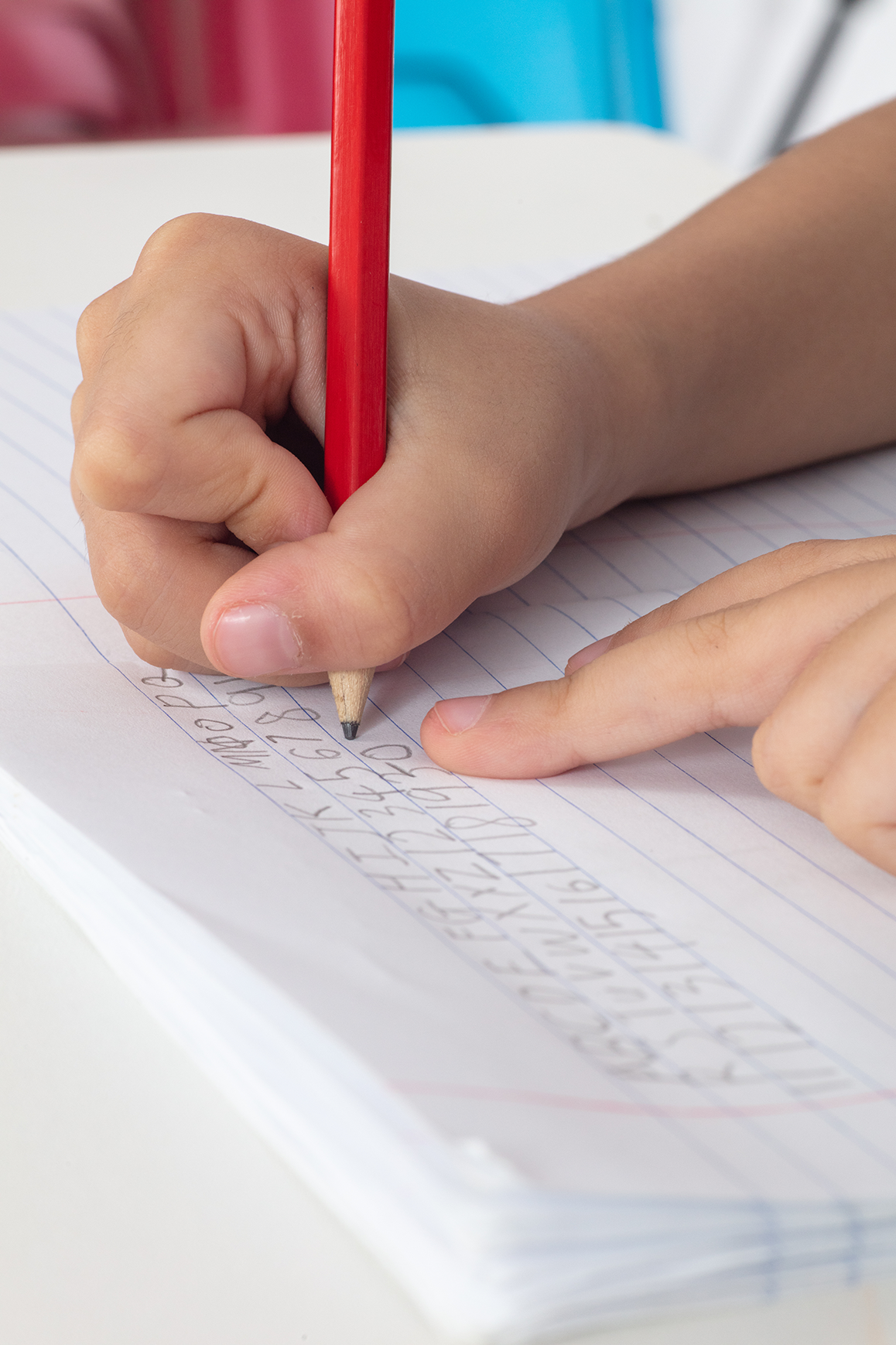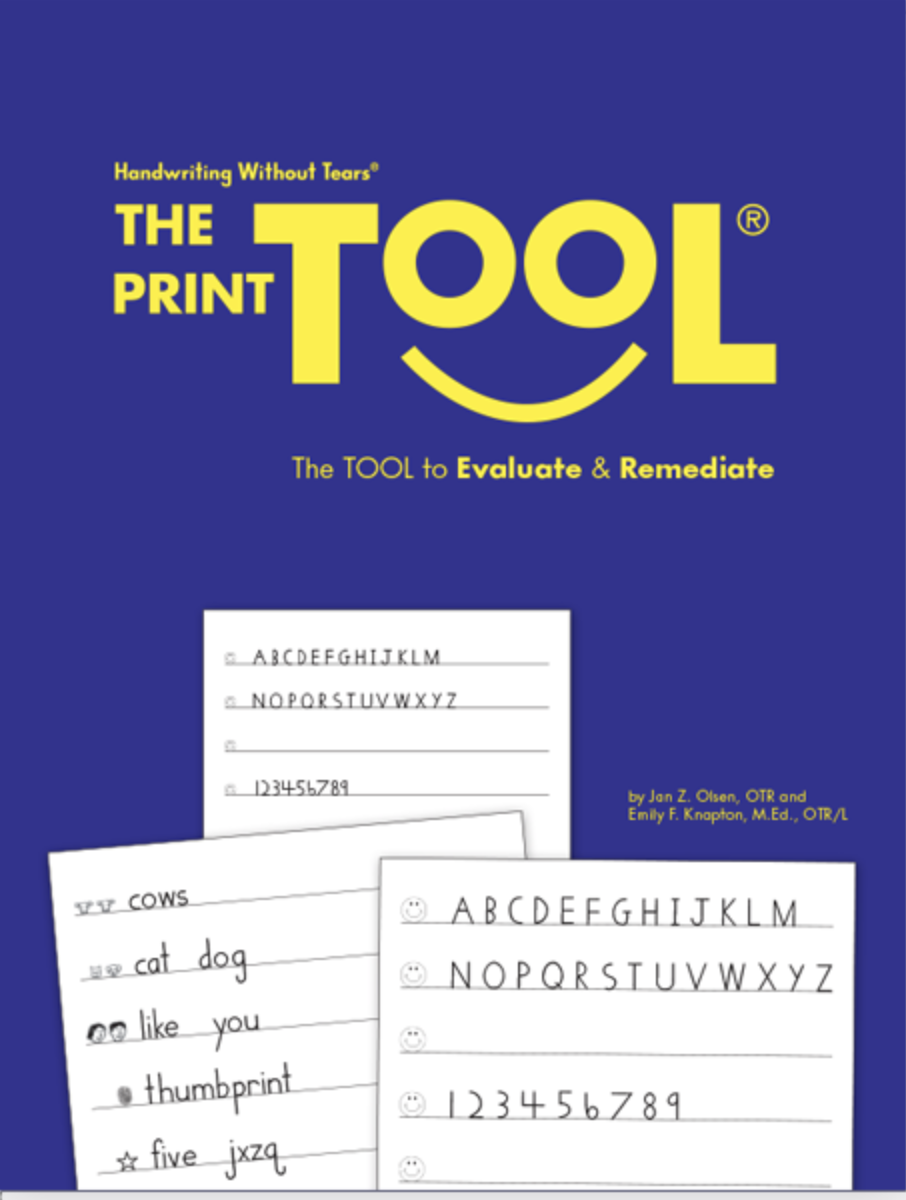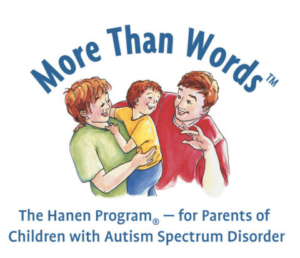Curriculum
Programs
All Programs are designed for typical and A-typical children alike. Programs offered in a group format are designed to help children who may have difficulties learn to interact with other children in a supportive environment. Programs are designed by members of the skilled therapy team but may be administered by other staff depending on individual children’s needs and the goals of the program. Individual programs are also offered for children who are in need of more individualized education.
Handwriting Without Tears
Integrated Listening (iLs)
More Than Words

Handwriting
All handwriting programs are based on the Handwriting Without Tears® curriculum but are designed to meet the needs of each child. While some may feel handwriting is a lost art with the use of computers, laptops and tablets today. Handwriting teaches more than simple written language.
Handwriting programs are designed by skilled occupational therapists who are trained to identify and treat fine motor, visual and perceptual difficulties in children. Many of the skills needed for proper handwriting are also needed for reading and math calculations. Handwriting was once a skill that every child was drilled on in school, but that does not happen any longer. Children are often faced with an expectation of handwriting excellence when they have never had a day of instruction. After school, handwriting programs can help children gain added confidence to succeed in school.
Handwriting Without Tears
Handwriting programs incorporate therapists to develop fine motor practice and the Handwriting Without Tears® curriculum. Letters are grouped by similar strokes, and not in alphabetical order that is traditionally taught. Music, dancing, and hands-on activities are used to help children learn letters and enjoy the activities. Each year/grade children are introduced to increased academic instruction and difficulties.
While handwriting is a skill addressed in the classroom setting, many schools no longer are able to provide handwriting education, but they continue to require children to use it on a daily basis. Many people feel that handwriting is a lost art due to the increased use of computers, but the written word is still very important. Not only is handwriting still used daily it also teaches many developmentally important skills.
A licensed occupational therapist who is certified by Handwriting Without Tears® provides both individual and group-based handwriting lessons. Lessons are individually tailored to fit the needs of every child.
Initial Assessment
It is recommended that children be formally assessed annually to identify areas of strength and weakness. The “print tool” is a formal assessment of a child’s current handwriting abilities. While the “Print Tool” is part of the “Handwriting Without Tears Program” it is able to
assess the child using any of the major handwriting programs. Young children who have little understanding of written language typically are assessed informally. The “Print Tool” assesses 8 areas of handwriting.
-
-
- Memory: Remembering and printing of letters and numbers that have been verbally dictated
- Orientation: The directionality of letters and numbers
- Placement: The location of letters and numbers on the baseline
- Size: How large or small a letter or number is written
- Start: Where each letter or number begins
- Sequence: The pattern or order of strokes of each part of the letters
- Control: The neatness and proportion of the letters or numbers
- Spacing: Amount of space left between letters within words and the spacing between words in a sentence
-
Initial assessment using the print tool will include parent consultation. Parents are encouraged to bring samples of their child’s work to help with the assessment process.
After completion of the handwriting assessment, the treating therapist will provide the family with a report including each of the areas and any recommendations for the child to work on.

Handwriting Without Tears Curriculum
Pre-School & Early Learners
Children at this young age should be taught the joy of learning to help prepare them for their academic future. Handwriting basics such as grip, body position, and shapes are taught to help get children ready to learn letters and numbers.
Preparatory skills are important as they teach children the skills they will need later for successful handwriting and other academic skills. Children are taught using developmentally appropriate and fun multi-sensory activities to help enforce learning.
Children learn to recognize the way each letter is formed using 3-dimensional activities. Capital letters are always taught first because they are developmentally easier for children to learn and it will help children find success early in the handwriting process.
Kindergarten
Kindergarten is where the Handwriting Without Tears® program often will begin with formal instruction of handwriting. The program incorporates hands-on activities and multisensory teaching strategies that build good handwriting habits early. Handwriting instruction incorporates playing and singing into letter building activities. Once children have learned to properly use capital letters lowercase letters can be taught.
As children gain the skills of proper handwriting they will begin to learn combining letters into words, sentences, and paragraphs.
Young children should not be left to practice forming letters alone. Perfect practice makes the perfect performance, so children should have perfectly formed letters and numbers as a model during the early stages of learning.
1st & 2nd Grade
Once children have learned the basic skills of writing such as letter formation, grip, and spacing they are ready to begin writing words, sentences, and paragraphs. Lower and upper case letters are both taught in printing. The program continues to focus on hands-on learning and multi-sensory activities. Activities are designed to be developmentally appropriate and fun so that the children want to learn.
Letters are presented in a developmental teaching order with letters grouped by similarities. Children will enjoy learning about the different styles of letters in the HWT curriculum (frog jump, divers, etc.)
3rd & 4th Grade
Cursive instruction is typically taught in 3rd grade and up due to the increased hand-eye coordination skills children have gained. HWT uses a style of cursive that has fewer loops and slants which often is what makes cursive difficult for children. Similar to the teaching of print letters, cursive is taught in a developmental teaching order and not in alphabetical order.
While many people say cursive instruction is unneeded, it teaches many valuable skills beyond just written language. Cursive writing helps synchronize the right and left sides of the brain which can increase participation and comprehension which does not occur when printing or typing.
5th Grade
By the 5th grade children typically have a good understanding of written language and need an opportunity to refine their skills.
Each program will briefly go over the basics of either printing or cursive skills. The focus will be on decreasing the size of the writing and increasing the overall appearance of the writing.
Integrated Listening (iLs)
The Science Behind iLs
iLs is based on the fact that we can change our brain – we can essentially re-wire it through specific and repeated stimulation, a concept known as neuroplasticity. As in building strength and endurance with physical exercise, we are able to build neurological pathways and synaptic activity at any age.
iLs trains for brain/body integration through a staged approach, starting with the fundamentals of sensory integration and then extending through more complex cognitive functions, including language, self-expression, and social skills.
iLs builds upon the psychoacoustic techniques developed by Alfred Tomatis, M.D., in Europe and refined by Integrated Listening Systems. The goal of iLs therapy is to improve the neurophysiological foundation for integrating sensory input by using specific sound frequencies, vibrations, and patterns to stimulate the brain.
If you are interested in the research that has been done with iLs they have several articles on the effectiveness on their website.
Using iLs at JLD Therapy
Integrated Listening Systems (iLs) in concert with therapy can improve children’s auditory processing abilities. Therefore, some children receive iLs during occupational therapy. While iLs can often help with therapy goals it is not appropriate for every child or situation. Therefore, we frequently will set up a home program with regular consultation. At times we will recommend iLs simultaneously with OT or Speech-Language Therapy if we feel that simultaneous listening and OT or SLP is the most efficient method of providing sensory input to optimize listening function.
Listening therapy, like occupational therapy, is based on the theory of neuroplasticity, which refers to brain changes that can occur. During therapy, specific sound and vibration frequencies and patterns are delivered through specially designed headphones. When clients are treated with iLs therapy only, they engage in creative projects or simply relax in a comfortable chair while listening to high-quality productions of Mozart and other classics that have been digitally manipulated to enhance certain sound frequencies.
How Does iLs Help?
- Organized Behavior
- Self-regulation
- Postural Control
- Bilateral Coordination
- Body Awareness and Praxis (Motor planning)
- Fine Motor Control and Temporal Spatial Organization
- Decrease Sensory Sensitivity (to sound, touch and multisensory experience)
- Attention
- Ability to read body signals (hunger, toileting, sleep)
Ready to get started?
Before starting your iLs program it is important to receive training from someone who has been trained in the program so that settings and adjustments can be made for the greatest success. Many of the therapists on our staff have been trained in a program set up and clinical use. Our team is able to provide consultation for ongoing iLs use both in person or over video conference.
When starting an iLs program several trials are done in the clinic before making recommendations for the program. This time allows us to provide the optimal setup and time for you to see the benefits. To see the most benefit from this program, frequent use is recommended. Families are able to purchase their own systems, or we are able to provide short term rentals in the clinic. To strengthen and reinforce listening programs, clients are often encouraged to use listening programs at home.
Review our team page for up to day information on which staff members have been trained.
More Than Words
The Hanen Program for Parents of Children With Autism Spectrum Disorder or Social Communication Difficulties
As a parent, you know how challenging it can be for your child with Autism Spectrum Disorder or other social communication difficulties to interact meaningfully with others and connect with the world around him.
The More Than Words Program was designed specifically for parents of children ages 5 and under on the autism spectrum and with other social communication difficulties. Addressing the unique needs of these children, the program provides parents with the tools, strategies, and support they need to help their children reach their full communication potential.
More Than Words does this by empowering you to help your child reach the following three goals:
- Improved social communication and back-and-forth interactions
- Improved play skills
- Improved imitation skills
 Here are some of the valuable things you’ll learn when you attend the More Than Words Program:
Here are some of the valuable things you’ll learn when you attend the More Than Words Program:
-
- What motivates your child to communicate
- How to use your knowledge about your child to set appropriate and realistic goals
- How to make interactions with your child last longer
- Tips for using pictures and print to help your child’s understanding
- Strategies for how to talk so that your child understands you
- Strategies for developing your child’s play skills
- Ways to help your child make friends
Benefits of Taking the More Than Words® Program
Practical strategies you can use in everyday situations
The More Than Words Program focuses on your natural, day-to-day life with your child. You’ll discover how to take everyday activities like meal time, story time and bath time and use them to help your child improve his communication and social skills. And you’ll have fun together while you’re doing it!
The More Than Words approach is easy to understand and easy to put into practice. With every strategy you learn, you’ll be given ample opportunity to practice and discuss it so that you won’t forget it.

“
“My son has made incredible strides due to your program. He has surprised a lot of people. What I really love about the program is that we are taught to work with our children. After all, an SLP may see them once a week, but we are with them around the clock, so if we can help with their speech it is actually a more beneficial situation for the children. Your course is invaluable and a must-do for parents, relatives and friends. I am forever grateful.”
-Debra, mother of 4-year old Anthony
Program Components
The More Than Words parent program includes:
- 8 training sessions in small, personalized groups
- A Hanen Certified speech-language pathologist leading the program
- A pre-program consultation for you and your child with your speech-language pathologist
- Three individual visits for you and your child with your speech-language pathologist in which you are videotaped while practicing with your child. Then you and your speech-language pathologist watch the videotaped interaction to “see” what’s helping and what you can modify to help even more
Program Resources
During the More Than Words Program, you’ll use the guidebook More Than Words: A Parent’s Guide to Building Interaction and Language Skills for Children with Autism Spectrum Disorder or Social Communication Difficulties.This guidebook covers all of the strategies from the More Than Words Program and offers dozens of examples for how you can use these strategies during everyday routines and activities with your child. Even after completing the program, you can keep coming back to this guidebook to remind yourself of what you have learned and to get new ideas and support as your child progresses and new goals are set.
If you are waiting to attend a More Than Words program, you may want to purchase the guidebook in advance to give your learning a head start and to gain some practical strategies that you can start using with your child right away.
Benefits of Taking the More Than Words® Program
Practical strategies you can use in everyday situations
The More Than Words Program focuses on your natural, day-to-day life with your child. You’ll discover how to take everyday activities like meal time, story time and bath time and use them to help your child improve his communication and social skills. And you’ll have fun together while you’re doing it!
The More Than Words approach is easy to understand and easy to put into practice. With every strategy you learn, you’ll be given ample opportunity to practice and discuss it so that you won’t forget it.
Here’s an example of a strategy you’ll learn in the program:
Repeat what you say and do
Offer opportunities for your child to take a turn
Cue your child to take his turn; and
Keep it fun! Keep it going!
The R.O.C.K.™ strategy can be used during any activity you do with your child to foster longer, more meaningful interactions and improved social skills.
An evidence-based and reputable program that’s worth your time
Like all of Hanen’s programs, More Than Words was developed by expert speech-language pathologists and is grounded in extensive research. The program itself is delivered by Hanen Certified speech-language pathologists who have completed specialized training from The Hanen Centre.
More Than Words requires a significant time commitment from parents in order to ensure the best possible learning experience. Once you’ve completed the program, however, the strategies you’ve learned will become such a natural part of the way you interact with your child that you won’t even notice you’re using them. The commitment you put in now will pay off during every interaction you have with your child.
For a detailed research summary and empirical evidence, click on the link below:
The chance to connect with other parents
One of the greatest benefits of the More Than Words Program is the opportunity it provides to connect with other parents. When you feel like no one understands what you’re going through, you can often feel isolated and alone in your struggle. At the More Than Words Program, you’ll meet other parents in the same situations. You will have opportunities to share experiences with other parents, gain insight from their experiences, and make new friends who really understand what you’re feeling.
Ready to Experience Joy and Laughter?
Click the button below to book your FREE informational call and learn what may be causing the issues, 3 things you can begin doing NOW, and the next steps toward solutions.